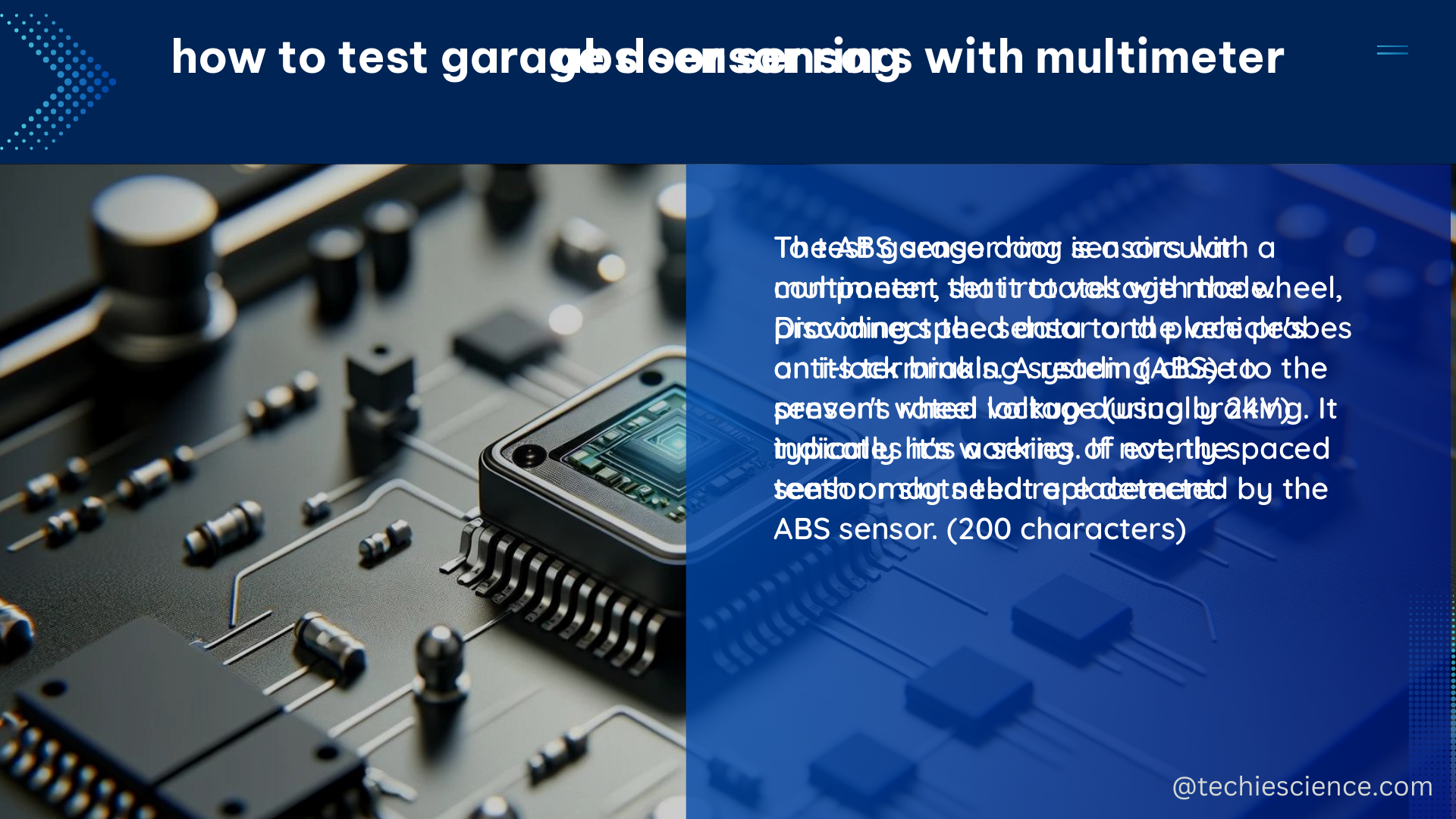The ABS sensor ring, also known as the wheel speed sensor, is a critical component in modern vehicles that measures the rotational speed of the wheels and transmits this information to the ABS control unit. This data is essential for various driving assistance systems, such as ABS, TCS, ESP, or ACC, to optimize driving safety, dynamics, comfort, fuel consumption, and emissions.
Understanding the Principle of Operation
The ABS sensor ring operates based on the principle of generating a quantifiable alternating voltage in response to the rotation of the impulse wheel, which is connected to the wheel hub or drive shaft. The pole pin, surrounded by a winding, connects to a permanent magnet whose magnetic effect extends to the pole wheel. The rotation of the impulse wheel and the resulting switching from tooth to tooth space brings about a change in the magnetic field, inducing an alternating voltage in the winding.
The frequency and amplitudes of this alternating voltage are directly related to the wheel speed, providing valuable information for the vehicle’s electronic systems. ABS sensors can be designed as active or passive sensors, with active sensors requiring a power supply and passive sensors generating a voltage without an external power source.
Fabrication Techniques for ABS Sensor Rings

In terms of fabrication methods, various techniques have been developed to decrease the cost of conventional cleanroom lithography, including:
- Transfer Printing: This method involves the transfer of functional materials or devices from a donor substrate to a receiver substrate, enabling the fabrication of high-performance sensors at a lower cost.
- Electrospinning: This technique uses an electric field to draw polymer fibers, which can be used to create flexible and stretchable sensor structures.
- Roll-to-Roll Gravure Printing: This printing method allows for the large-scale and cost-effective production of sensor arrays on flexible substrates.
- Laser Engraving: This technique uses a laser to selectively remove material from a substrate, enabling the creation of complex sensor patterns and structures.
- 3D Printing: Additive manufacturing techniques, such as 3D printing, can be used to fabricate customized sensor geometries and integrate them into various applications.
- Inkjet Printing: This digital printing method allows for the deposition of functional inks, such as conductive materials, to create sensor patterns and interconnects.
- Screen Printing: This versatile printing technique can be used to deposit a wide range of materials, including conductive inks, to fabricate sensor structures.
These fabrication methods aim to achieve biocompatibility, conductivity for electrical interconnects, comfort for daily wearing, and scalability for mass fabrication.
Material Considerations for Wearable Sweat Sensors
For wearable sweat sensors, specific material considerations include:
- Strong Adhesion with Sweaty Skin: The sensor materials must be able to maintain a strong adhesion to the skin, even in the presence of sweat and other environmental factors.
- High Stability in the Sweat Matrix: The sensor materials must be able to withstand the chemical composition and pH changes of the sweat matrix without degradation or interference with the sensor’s performance.
- Selective Permeability of Gas and Sweat: The sensor materials should allow the selective permeability of target analytes, such as gases or sweat components, while preventing the interference of other substances.
Biosensor Design Considerations
Biosensor design considerations involve understanding the unique advantages and disadvantages of different bioreceptors and transducers, as well as identifying and achieving critical biosensor characteristics based on different application scenarios. These characteristics may include:
- Sensitivity: The ability of the biosensor to detect low concentrations of the target analyte.
- Selectivity: The ability of the biosensor to distinguish the target analyte from other interfering substances.
- Stability: The ability of the biosensor to maintain its performance over time and under various environmental conditions.
- Response Time: The time required for the biosensor to provide a measurable response to the presence of the target analyte.
- Reproducibility: The ability of the biosensor to consistently provide the same response under similar conditions.
- Biocompatibility: The compatibility of the biosensor materials with the biological environment in which it is used.
By considering these design factors, researchers and engineers can develop advanced ABS sensor rings that meet the specific requirements of modern vehicle systems.
Conclusion
The ABS sensor ring is a vital component in modern vehicles, providing essential data for driving assistance systems. Its operation is based on the generation of an alternating voltage in response to wheel rotation, and various fabrication methods have been developed to decrease production costs and improve scalability. By understanding the principles of operation, fabrication techniques, and design considerations, engineers can continue to enhance the performance and reliability of ABS sensor rings, contributing to the advancement of vehicle safety and efficiency.
References:
– Flexible and Stretchable Sensors for Wearable Health Monitoring
– Wearable Sweat Sensors for Health Monitoring: A Review
– Check and change ABS sensor

The lambdageeks.com Core SME Team is a group of experienced subject matter experts from diverse scientific and technical fields including Physics, Chemistry, Technology,Electronics & Electrical Engineering, Automotive, Mechanical Engineering. Our team collaborates to create high-quality, well-researched articles on a wide range of science and technology topics for the lambdageeks.com website.
All Our Senior SME are having more than 7 Years of experience in the respective fields . They are either Working Industry Professionals or assocaited With different Universities. Refer Our Authors Page to get to know About our Core SMEs.